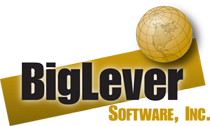The steady march of Feature-based Product Line Engineering (PLE) from the narrow field of early adopters into the broad mainstream of systems engineering practitioners was on full display at the INCOSE International Workshop (IW2023) in Torrance, California in January. One might have expected the COVID gap with low onsite attendance might have slowed this progression, but the before-and-after COVID contrast was striking.
The two INCOSE PLE International Working Group (PLE IWG) meetings were standing room only with many new faces. Most participants were already informed by the early adopter case studies, the INCOSE PLE IWG Primer of Feature-based PLE, the ISO/IEC 26580 standard on Feature-based PLE that was released in 2021 at the height of the pandemic, and ISO 26580 compliant PLE support in the new SysMLv2 modeling language. Multiple individuals identified themselves as leading Centers of Excellence in their organizations for Digital Engineering and Product Line Engineering. Pre-pandemic meetings of the PLE IWG were often dominated by questions and conversations on early eduction and awareness about PLE, whereas now the participants were sharing deep practical experience in both PLE problems and PLE solutions.
A few common themes emerged from the conversations in the PLE IWG and other working group sessions where PLE was a topic of discussion:
- With the push by many organizations into Digital Engineering (DE) and Model-based System Engineering (MBSE), the need for PLE is no longer a nice-to-have, it’s a need-to-have. Early generation copy-based approaches for managing product lines are no longer practical when dealing with sophisticated and tightly integrated digital models, engineering artifacts, and digital threads. The complexity of trying to evolve and maintain just two or three nearly-identical cloned copies is intractable.
- Unfortunately the PLE discipline is not yet represented in many DE initiatives being driven by government organizations. Each systems engineering group in each of the organizations represented is struggling with the same issue of having to teach, motivate, and implement PLE as part of their DE initiatives — with varying degrees of success.
- Government contracting agencies have historically funded their programs for individual members of a system family, making it extremely difficult for both government agencies and government contractors to create efficient PLE practices and deliverables.
- PLE practitioners are universally asking for more help on how to sell the value of PLE to the business leaders that can enable its adoption.
Looking ahead, here are some of the initiatives that the PLE IWG is working on to advance the PLE field.
- The new version 5 of the INCOSE Systems Engineering Handbook includes a wonderful new section on PLE, based primarily on the ISO 26580 standard. The handbook and PLE section are a significant modernization of the previous version 4 that was published nine years ago.
- The SysMLv2 standard with ISO 26580 compliant variation management is due to be released this year. MBSE tool vendor will now have clear and consistent guidance on how to support and enable modern PLE practices.
- INCOSE has launched their Future of Systems Engineering (FuSE) initiative to enable realization of the INCOSE Vision 2035. The PLE IWG plans to create an addendum to show the critical role and key milestones for PLE in this SE future.
- The PLE IWG and INCOSE Standards Groups will lead the development of the follow-on ISO 26581 standard on Temporal Management in the contact of ISO 26580 Feature-based PLE.
- The PLE IWG has started and will continue working with the US DoD Office of the Undersecretary of Defense, System Engineering Modernization effort, to find ways to better support PLE in the contact of the Digital Engineering initiatives.
It was great to see the significant and accelerating pace of PLE adoption in the Systems Engineering community. My closing thought is one that I promoted throughout IW2023. If PLE is to take its rightful place as a standard practice in Systems Engineering, then the field must elevating its thinking from Systems Engineering to System Family Engineering.
